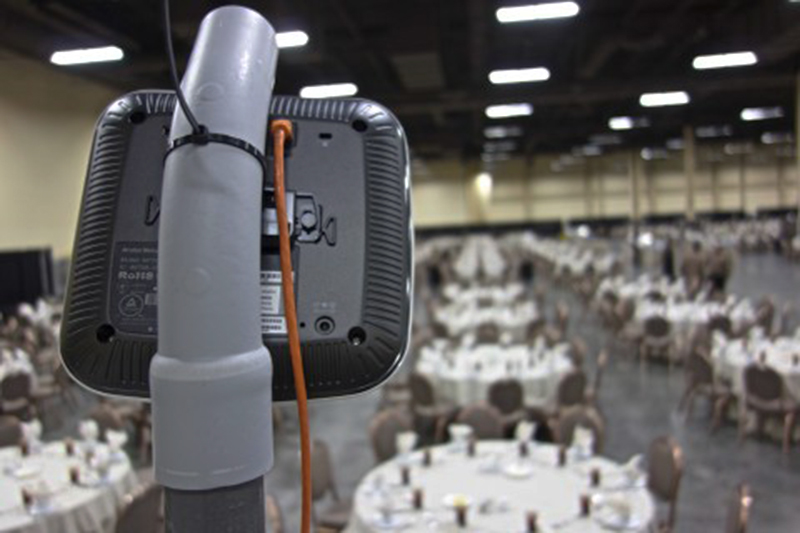As the one of the top networking companies in the market, Cisco provides us many wireless access points to meet various business needs. However, Aruba AP also is the popular brand in the market.
Which is better or more suitable for your needs?
In this article, let’s compare.
Cisco Wireless AP
Cisco provides an intent-based architecture to meet customer expectations and scale for growing business demand. It provides the latest Wi-Fi 6 Aps (Catalyst 9100 Aps), and provides other 802.11ac Wave 2 Aironet access points (Aironet 4800, 3800, 2800 and 1800), outdoor APs, SMB APs, etc.

Table 1. The comparison of Cisco Wireless vs. HPE vs. Huawei.
| Brand | Cisco | HPE | Huawei |
| Innovations | |||
| Recognize and service 1400+ apps Differentiate between non-encrypted and encrypted apps to help ensure appropriate treatment of business- critical traffic. | √ can inspect traffic and application flows to enforce network access policy and protect against attacks via Cisco IOS Flexible NetFlow, DNS-AS, NBAR, and Cisco DNA Center. | √ 2300 Apps HPE switching platforms are limited to basic traffic classification and policy enforcement via ACL. HPE dynamic segmentation requires centralized data-plane architecture using tunneled node, which can dramatically reduce system performance and add CapEx. | √ 1900 Apps Huawei offers limited SLA monitoring with iPCA. Huawei NetStream is still limited on some platforms, and most of the time it is still sampled. Full NetStream is taxing to switch performance. |
| Track users on location via BLE or Wi-Fi Get a realistic and granular view of customer locations, whether tracking via BLE or Wi-Fi. | √ Cisco DNA Spaces supports the tracking of BLE and Wi-Fi devices with location accuracy up to 1-2 meters. | √ Separate platforms for tracking BLE (Meridian) and Wi-Fi (ALE) HPE has limited support with Bluetooth in the access points but lacks precise Wi-Fi-based location. Unlike Cisco, HPE does not support Virtual BLE beacons or precise location based on Wi-Fi angle of arrival. | √ Huawei has no support for Virtual BLE beacons. Huawei Wi-Fi location based on Angle of Arrival (AoA) is an unproven solution. |
| Engage with customers on location Make relevant business decisions while providing a more personalized experience. | √ The Cisco DNA Spaces solution offers an understanding of how users interact with the environment so businesses can make better decisions. | √ (only using BLE) HPE provides BLE location in its access points, tags, and Meridian application for wayfinding and customer engagement. | × |
(Info:https://www.cisco.com/c/dam/en/us/products/wireless/competitive-comparison.pdf?oid=otren017426)
Aruba Wireless AP
Aruba Access Points deliver fast, reliable Wi-Fi performance, boost network efficiency, and support the growing mobile and IoT density demands on your network.
Aruba provide these hot series:
- Aruba 510 Series Access Points
- Aruba 100 Series Access Points
- Aruba 200 Series Access Points
- Aruba 300 Series Access Points
- Aruba OfficeConnect Series Access Points
In these series, the Aruba 510 series also provides 802.11ax (Wi-Fi 6), like the Cisco Catalyst 9100 APs.

Table 2. Cisco Catalyst 9100 Access Point vs. Aruba 510 Series Access Point
| Series | Aruba 510 Series Access Point | Cisco Catalyst 9100 Access Point |
| Wi-Fi radio specifications | Indoor, dual radio, 5GHz 802.11ax 4×4 MIMO and 2.4GHz 802.11ax 2×2 MIMO | Indoor, dual radio, 2.4 GHz (4×4), 5 GHz (8×8 and 4×4), 802.11ax |
| Antenna | Internal (AP-515) and External Antenna (AP-514) | Internal and External Antenna (Catalyst 9130, Catalyst 9120, Catalyst 9115) Or only Internal Antenna (Catalyst 9117) |
| GPL Price (GPL Check Tool) | Miss | $1,245.00 – $1,695.00 |
This two company provides 802.11n/ac AP and we can compare somethings.
Table 3. Cisco Aironet 2800 and 3800 vs. Aruba AP-335
| Models | Aruba AP-335 | Cisco Aironet 2800 & 3800 |
| Processor, Memory | 1.4-GHz dual-core processor, 256 MB RAM | 1.8-GHz dual-core processor, 1 GB RAM |
| Wave 2 RF Support | Single-User (SU) and Multi-User (MU) MIMO | Single-User (SU) and Multi-User (MU) MIMO |
| Wi-Fi standards supported | IEEE 802.11 a, b, g, n, ac | IEEE 802.11 a, b, g, n, ac |
| Antennas | 12 internal, omnidirectional, dual-band antennas | i and e models support internal or external antennas |
| Channel support | 20, 40, 80 and 160-MHz channels | 20, 40, 80 and 160-MHz channels |
| Dual-band radios | 2.4 GHz and 5 GHz | 2.4/5 GHz and 5 GHz, both radios can run in 5 GHz concurrently |
| Auto assignment of radios | Adaptive Radio Management (ARM) | FRA (Flexible Radio Assignment) |
| 1000BASE-T interfaces | Two; supports LAG (aggregation of both links) | Two; supports LAG (aggregation of both links) |
| Higher-speed uplink over Cat 5e | Supports a Smart Rate uplink port; can negotiate up to 2.5 Gbps | (Model 3800 only) Supports Multigigabit Ethernet (mGig), which can negotiate up to 5 Gbps |
| Special features | USB 2.0 port, Bluetooth Low Energy | Side-loading module port for future modules (i.e., security), USB 2.0 port |
Both of Cisco AP and Aruba AP provide various choices for customers’ business need. According to the budget and networking needs, we can choose the right one from them.
If you want to order Cisco AP or Aruba AP, please contact us:
E-mail: [email protected]
Telephone: +1-626-239-8066 (USA) / +852-3050-1066
Fax: +852-3050-1066 (Hong Kong)
Or visit our online shops:
Related Topics:
Selected Aruba Wireless Access Points and Mobility Controllers
Available 802.11ac APs from Cisco, Aruba, HP and Ruckus Wireless

